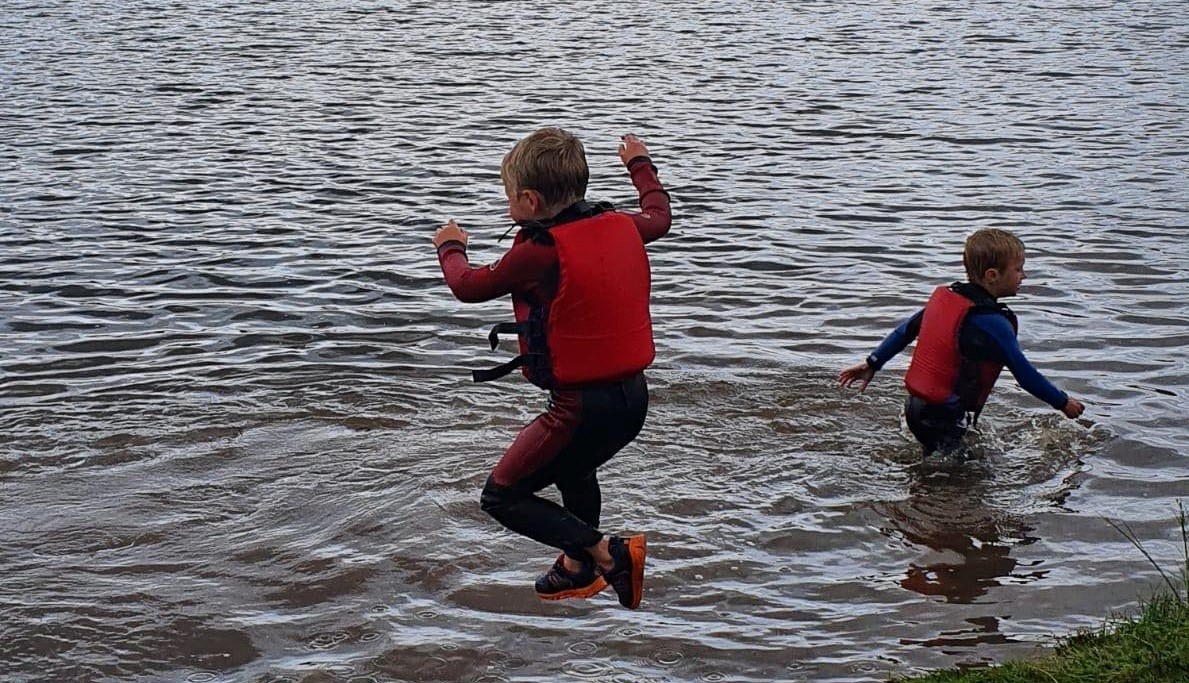
There are many well-known fishing rivers in the Aberdeenshire area. The coastal waters of the North East provide commercial as well as recreational and educational opportunities for individuals or groups who wish to include angling and fishing activities within their programmes.
There are two distinct forms of fishing - Boat Angling and Shore Angling.
Outdoor Access Scotland Angling Scotland
Boat Angling can take place in any craft from a small dinghy to a large charter boat. Fishing can take place from close inshore to many miles offshore. Safety precautions will vary for each area, type of craft, type of fishing, weather, tides and other factors.
Shore Angling can take place anywhere from a sandy beach to rocky cliffs. Safety precautions will vary for each venue, casting style, day/night, type of fishing, weather, tides and other factors.
The guidance below applies to shore and bank fishing and fishing from rowing boats on inland waters.
Where fishing takes place from small boats (craft under 6 metres in length with or without an engine) on open inland water, the leader should have particular expertise in boat handling. In most cases it is advisable to obtain the services of a professional boatman.
Careful planning and preparation contribute greatly to the safe and enjoyable outcome of any activity. The council's generic risk assessment for your chosen activity is designed to help you plan that activity safely, and must be referred to in the early planning stages. If the site or nature of the planned activity poses additional risks which are not covered by the generic risk assessment then these must be considered in an additional site specific risk assessment:
Participants should be made aware of any potential hazard in the area where they are fishing such as:
Consideration should be given to water borne infections.
The leader must make regular close contact with each member of the group throughout the session.
With young people, wading should be treated with considerable caution and should only be permitted under the following conditions:
Eye protection is important for those being introduced to fly fishing (safety glasses, sun glasses or similar). A hat should also be worn to protect the head and ears.
Any crossing which requires more than a simple step across a small stream should not be underestimated and should only be contemplated when no significant risks are posed by doing so. When managing risks associated with water hazards, leaders must operate within the scope of their training and experience.
The key to a successful outcome lies in the planning and risk assessment stages. Contingency plans should be drawn up for those situations where water is above ankle level or where the outcome of a crossing is uncertain. These should include alternative routes or waiting until water levels recede.
Instruction in recovery techniques from deep, fast water when wearing waders and the use of a wading staff should be given prior to allowing participants to fish from faster moving water.
Training in casting techniques must be provided and carefully supervised prior to participants being allowed to fish on their own.
Advice should be provided on the action to take if a hook becomes embedded in flesh.
Where fishing or angling expeditions take place on the sea, or on large expanses of inland water, this should only be undertaken on board a vessel which currently meets the operating guidelines laid down by the Department of Transport.
Co-ordinators or leaders should be aware of the need to use craft that are adequate for the activity and large enough for the numbers taking part. The ratio of staff to the number of participants will be dependent on the type of vessel used and must be within the recommended ratio of 1 leader: 5 participants.
A CEN approved life jacket or buoyancy aid must be worn.
Particular attention should be paid to ensuring that participants clothing is warm as well as wind and waterproof. Fluorescent coloured clothing which makes accident victims more visible is of particular benefit.
Co-ordinators or leaders need to be aware of those in the party who are not confident swimmers and take account of this in their supervision arrangements.
Measures to prevent seasickness should be considered. It should be noted that some treatments can cause drowsiness.
Casting from sea fishing boats should not be permitted.